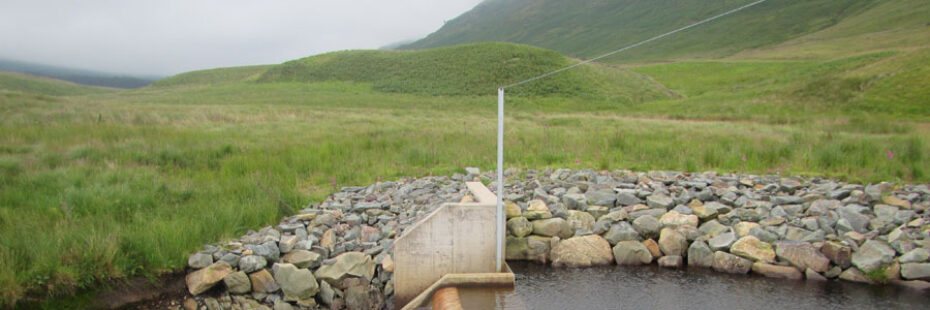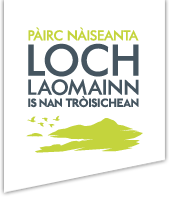
Keltie Water Hydro – success shared
What is a run-of-river hydro scheme? Why are they important and where are they in the National Park? The answer to these questions can be found in our hydro blog.
By way of update – 45 hydro schemes have been granted planning permission in the Park. Six of these are under construction and 32 are completed on the ground and generating electricity – one these is Keltie Water hydro within Drummond Estate, north of Callander and we want to share, with you, this example of good practice.
The 980kw scheme was granted planning permission in 2014 and construction started the following year. Park planners worked closely with Drummond Estate and their agent, Campbell of Doune Ltd. The contractor was TSL Contractors Ltd. The pipeline was mostly routed alongside a public footpath/ track that passes through the estate and was used by construction traffic rather than constructing new tracks. Public access was well managed during construction so that users could still pass through safely.
A timber bridge was installed over the Gleann Breac-Nic watercourse (which feeds into Keltie Water) with the hydro pipe suspended discreetly underneath it. The watercourse lies on the highland boundary fault so the bedrock is eye-catching and has the status of a ‘Geological Conservation Review Site’ (GCR) because of the rock features. The bridge had to be carefully constructed to avoid any damage. Together with carrying the pipe, the bridge provides a safe public platform for viewing the rocks.
As part of the planning permission, Park planners secured the construction of a foot bridge across Keltie Water after the original bridge, part of the public footpath route connecting the Park with the adjacent Stirling Council area, was washed away in a 2004 storm. The footbridge reinstated safe access over the watercourse after 14 years of people getting very wet feet! It had been impassable when in spate. Both bridges are starting to weather and blend nicely into their setting.

The Keltie Hydro scheme
All was not lost in 2004 as the storm washed down, into a dam within the estate, lots of gravel deposits. The dam, on the Allt a’ Chroin watercourse (which feeds into Keltie Water) was emptied and the gravel was used to reinstate the historical track connecting the dam with the public footpath. It is at the dam where the main ‘intake’ (where the water is abstracted for the hydro scheme) is located. Although the intake is located on a dam, it operates as a run-of-river scheme with no storage capacity. I.e. the scheme abstracts what the dam spills. The dam, formerly owned by Scottish Water, was built to provide drinking water to the people of Callander whereas its new use provides electricity!
The other (secondary) intake is constructed on the Gleann Breac – Nic watercourse and is a conventional run-of-river hydro intake. A decision not to reinstate a small burrow pit, used to win gravel to construct the track to the secondary intake, was taken because the Sand martin birds had moved in! Who are we to disturb them!?
The powerhouse is a big building – it had to be to install/ house the huge turbine needed to operate this scheme. But that said, it is sited sensitively in a low lying position and well absorbed by the surrounding mountainous landscape. The reclaimed local stone and natural slate have created a quality finish that is fitting for the location.
This scheme is a great example of where ground disturbance was minimised – where possible, the pipeline and tracks followed the route of old Scottish Water infrastructure associated with the dam. The ground has regenerated well because our National Park award winning guidance on renewable energy together with other good practice guidance provided by Scottish Natural Heritage and Scottish Environment Protection Agency was followed.
Overall this hydro scheme was well constructed with limited impact on ecology, habitats and landscape. This special area of Your Park can continue to be enjoyed as ever before.

